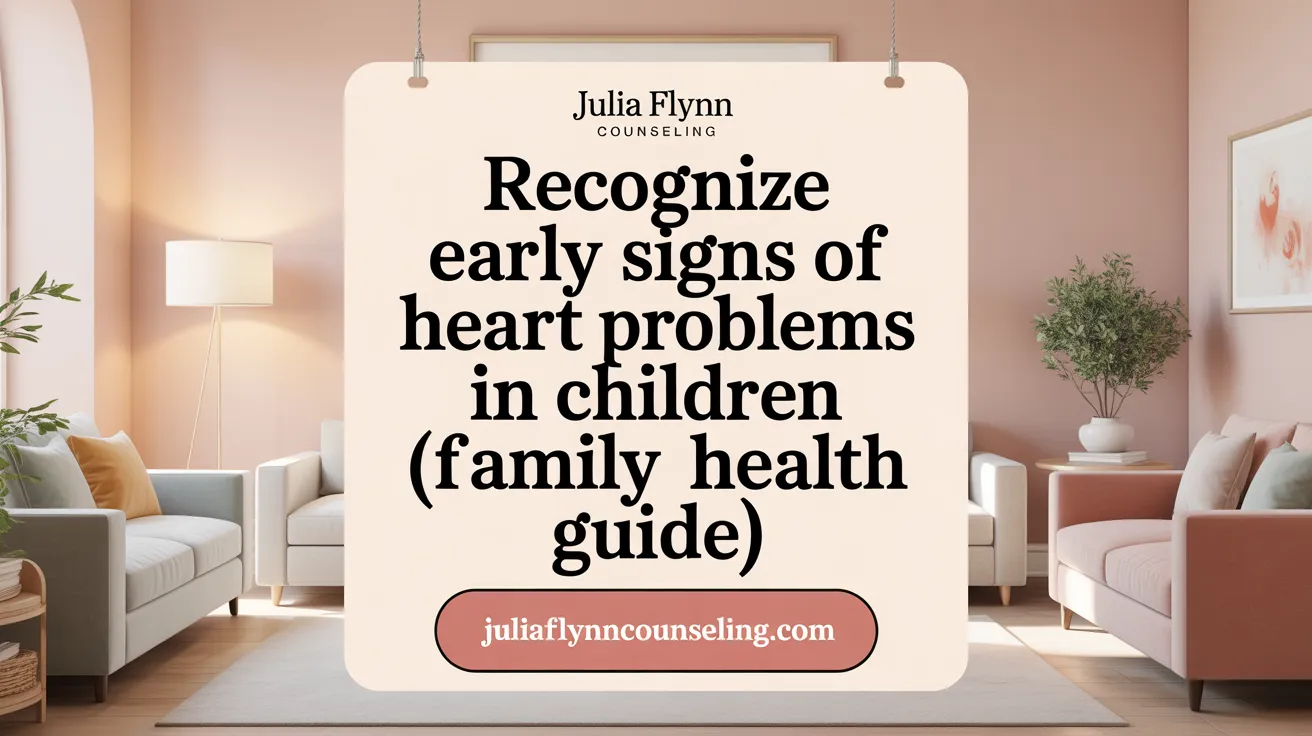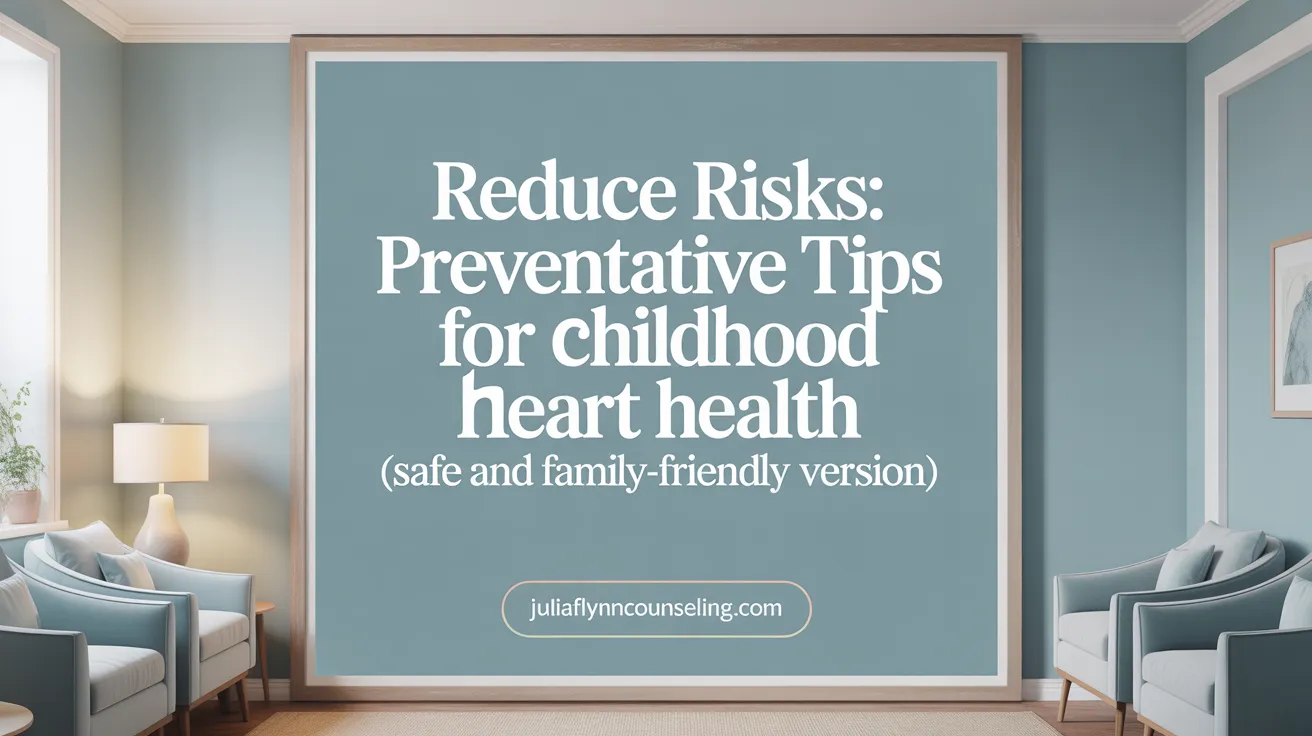Understanding the Importance of Early Detection in Childhood Heart Health
Heart conditions in children, whether present from birth or acquired later in life, can pose significant health challenges. Prompt recognition of warning signs and symptoms is critical for early diagnosis and effective management. This article aims to educate parents, caregivers, and guardians about common heart problems in children, the physical signs to watch for, risk factors, and when to seek medical advice—all vital to protecting the health and well-being of children.
Common Physical Signs of Childhood Cardiac Defects

What are common physical signs of a child with a cardiac defect?
Recognizing early signs of congenital heart defects in children is essential for prompt diagnosis and treatment. One of the most noticeable signs is a bluish tint to the skin, lips, and nail beds, known as cyanosis. This coloration indicates that the child’s blood is not getting enough oxygen, which can happen when heart structures are abnormal.
Children with heart issues often exhibit rapid or difficult breathing, especially during feeding, activity, or while lying down. This breathing difficulty is caused by the heart's inability to work efficiently, leading to fluid buildup in the lungs.
Fatigue and decreased alertness are also common. Children struggling with poor blood flow may tire easily during activity or may appear less responsive. These signs reflect the heart’s reduced capacity to deliver nutrients and oxygen throughout the body.
During routine physical exams, a healthcare provider might detect a heart murmur — an abnormal sound in the heartbeat caused by irregular blood flow across heart valves or chambers. Such murmurs may be harmless but can also indicate structural defects requiring further evaluation.
In addition to these signs, poor circulation can lead to swelling in the legs, abdomen, or around the eyes. This swelling results from fluid accumulating due to the heart's inability to pump blood effectively, a condition known as heart failure.
Monitoring these physical signs can help caregivers and healthcare professionals identify potential heart problems early, leading to timely intervention and better health outcomes.
| Symptom/Sign | Description | Significance |
|---|---|---|
| Cyanosis | Bluish skin, lips, nails | Indicates low oxygen levels in blood |
| Rapid or labored breathing | Breathing difficulty during activity or feeding | Reflects lung congestion and heart inefficiency |
| Fatigue & low energy | Reduced alertness, tiredness | Sign of ineffective blood circulation |
| Heart murmurs | Unusual heart sounds | Possible structural heart abnormalities |
| Swelling in extremities | Edema around eyes, abdomen, legs | Fluid retention due to heart failure |
Early Warning Signs of Heart Problems in Infants, Children, and Teens

What are the early warning signs of heart issues in children?
Early detection of heart problems in children is crucial for effective treatment and better outcomes. Symptoms can vary significantly with age but often share some common features.
In infants, warning signs include feeding difficulties such as trouble swallowing or tiring during feeds, excessive sweating, fast breathing, poor weight gain, and a bluish tint to the lips, tongue, or nail beds (cyanosis). These signs may indicate insufficient oxygenation or poor blood circulation.
As children grow, signs shift towards more activity-related symptoms. Toddlers and young children might experience shortness of breath, fatigue faster than their peers, episodes of fainting, or heart palpitations during physical activity. These symptoms suggest overexertion or abnormal heart rhythms.
Older children and teenagers often report chest pain, dizziness, irregular or racing heartbeat, and fainting spells during exercise. Such episodes can be warning signs of underlying cardiac issues like arrhythmias or structural heart problems.
Recognizing these symptoms early and seeking prompt evaluation by a healthcare professional is essential. Tests such as echocardiograms, ECGs, or stress tests can help diagnose the precise cause, enabling timely treatment for conditions like congenital heart defects, arrhythmias, or cardiomyopathies.
Being alert to these signs and symptoms can save lives, as early treatment often leads to healthier, more active lives for affected children.
Recognizing and Responding to Potential Heart Problems: A Guide for Parents and Caregivers

How can parents and caregivers recognize potential heart problems in children?
Parents and caregivers play a crucial role in identifying early signs of heart issues. Watch for signs such as cyanosis, which appears as a bluish tint to the skin, lips, or nail beds, indicating insufficient oxygen levels. Unexplained fatigue, especially during or after physical activity, can also be a warning sign. Challenges with feeding, excessive sweating during feeds in infants, or difficulty gaining weight may point to ineffective blood pumping. Children showing quick or irregular heartbeat, fainting episodes, chest pain during exertion, or experiences of dizziness should prompt medical evaluation. Particularly in infants, symptoms like rapid breathing, trouble feeding, or fainting are significant alerts. Since many symptoms overlap with other common illnesses, persistent or alarming signs deserve thorough examination by a healthcare provider. Regular check-ups complement attentive observation; knowing your family’s medical history can help anticipate risks. Advanced diagnostic tests such as echocardiograms and electrocardiograms (ECGs) are essential tools used by cardiologists to confirm and assess heart conditions. Early detection through vigilant observation and testing can greatly improve treatment outcomes and quality of life for children with heart concerns.
When to Seek Medical Attention for Childhood Heart Symptoms

When should medical attention be sought for a child showing symptoms of heart problems?
Timely medical care is essential when children display signs that could indicate underlying heart issues. Immediate evaluation is critical if a child experiences persistent fatigue, difficulty breathing, or bluish skin—particularly around the lips, nail beds, or inside the mouth (cyanosis). Fainting episodes, chest pain, or heart palpitations during or after physical activity also require urgent attention.
In infants, warning signs include poor weight gain, trouble feeding, rapid breathing, sweating during feeds, and a bluish tint to the lips or tongue. These symptoms suggest that the heart may not be pumping effectively or there is inadequate oxygenation.
Monitoring these signs and seeking medical help without delay can significantly impact outcomes. A pediatrician can perform initial assessments and may refer the child to a pediatric cardiologist for detailed testing.
Diagnostic procedures like echocardiograms, electrocardiograms (ECGs), and stress tests help identify specific conditions, guiding appropriate treatment. Early intervention can prevent complications and improve the child's quality of life.
Importance of timely medical referrals
When symptoms indicate potential heart problems, referrals to specialized healthcare providers are crucial. Pediatric cardiologists have the expertise and advanced tools necessary to diagnose and manage congenital and acquired heart conditions effectively.
Role of pediatric cardiologists
Pediatric cardiologists evaluate symptoms, conduct specialized tests, and develop management plans tailored to each child's needs. They oversee ongoing care, including medication, surgical interventions, or other therapies when necessary.
Tests used for diagnosis
Common diagnostic tools include:
| Test | Purpose | Additional Info |
|---|---|---|
| Echocardiogram | Visualize heart structure and function | Non-invasive ultrasound |
| ECG (Electrocardiogram) | Assess electrical activity | Detect arrhythmias |
| Stress Test | Observe heart response to exercise | Usually suitable for older children |
| Cardiac MRI | Detailed images of heart tissues | Used for complex cases |
Prompt recognition and assessment of symptoms enable early treatment, which can lead to healthier, longer lives for affected children.
Specific Childhood Heart Conditions: Understanding Key Diagnoses and Their Impact
What are some specific childhood heart conditions parents should be aware of?
Parents need to recognize various congenital and acquired heart conditions that can affect children. Congenital heart defects, which develop during early fetal development, include defects like holes in the heart such as atrial septal defects (ASD), ventricular septal defects (VSD), and abnormal vessel connections like patent ductus arteriosus (PDA). These can lead to symptoms such as cyanosis (a bluish tint to the skin or lips), rapid breathing, fatigue, and swelling.
In addition to congenital issues, children may also develop acquired heart diseases. Kawasaki disease is one such condition marked by inflammation of the arteries, which can cause coronary artery aneurysms if not treated promptly. Viral myocarditis, an inflammation of the heart muscle often due to viral infections, is another critical concern that can lead to sudden heart failure or arrhythmias.
Pediatric cardiomyopathy, the deterioration of heart muscle structure and function, is a major cause of sudden cardiac death in children. This condition manifests through symptoms like dizziness, fainting, irregular heartbeat, and poor exercise tolerance. It can be inherited or caused by infections, toxins, or systemic diseases.
Diagnosis typically involves detailed imaging and tests such as echocardiograms, electrocardiograms (ECGs), and sometimes genetic testing. Treatment options range from medications and lifestyle adjustments to surgical interventions, including device implantation or even heart transplants.
Early detection and management allow many children with these conditions to lead active, healthier lives. Regular pediatric screening and awareness of warning signs are crucial in ensuring timely intervention.
Risk Factors and Prevention Strategies for Childhood Heart Health Problems

What risk factors contribute to childhood heart health problems?
Childhood heart issues can stem from various factors. Genetic predispositions play a significant role, including a family history of heart disease or inherited conditions like Down syndrome, which often includes congenital heart defects. Chromosomal abnormalities are associated with higher risks of heart problems.
Environmental exposures during pregnancy can also impact heart development. These include maternal smoking, alcohol consumption, certain medications, and infections such as rubella, which can interfere with fetal heart formation. Exposure to harmful chemicals or toxins in utero further increases the risk.
Maternal health influences the likelihood of heart defects. Conditions like uncontrolled diabetes or phenylketonuria (PKU) during pregnancy can disrupt fetal development, including the heart. Proper management of these health issues is crucial.
Preventive strategies focus on comprehensive prenatal care. This includes regular medical checkups during pregnancy, proper nutrition, and avoiding harmful substances. Managing maternal health conditions tightly and ensuring vaccination against infections like rubella help reduce risks.
Encouraging healthy habits after birth is also essential. Breastfeeding, avoiding exposure to tobacco smoke, and maintaining a healthy environment contribute to better cardiac health.
By understanding and controlling these risk factors, healthcare providers and parents can help lower the chances of congenital and acquired heart problems in children. Early intervention and ongoing health maintenance are vital for promoting lifelong heart health.
Empowering Families to Protect Childhood Heart Health
Recognizing the early warning signs of heart problems in children is a vital step toward timely diagnosis and effective treatment. Awareness of symptoms such as cyanosis, breathing difficulties, fatigue, chest pain, palpitations, and fainting can alert parents and caregivers to seek medical attention promptly. Understanding specific conditions, risk factors, and the importance of regular health check-ups empowers families to advocate for their children's heart health. With advances in pediatric cardiology, many children with heart conditions live full, active lives. Staying informed, vigilant, and connected to healthcare professionals ensures the best outcomes in childhood heart health.
References
- Signs your infant may have an undiagnosed heart defect
- Symptoms that Might Indicate a Heart Problem | Children's Hospital ...
- Three ways to recognize a heart problem in your child - UT Physicians
- These Signs May Indicate a Potential Heart Condition in Kids
- Cardiomyopathy in Children & Teens - HealthyChildren.org
- Heart disease - Symptoms and causes - Mayo Clinic
- Recognizing Signs of Heart Issues in Children Early - Woombie
- Are you listening to your heart? How to recognize the early signs of ...
